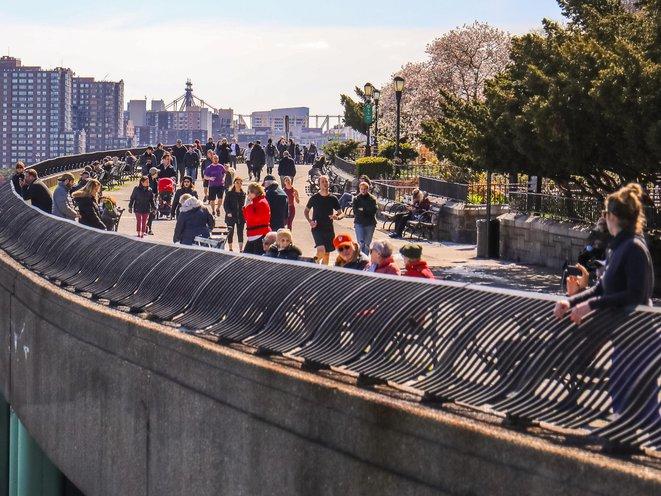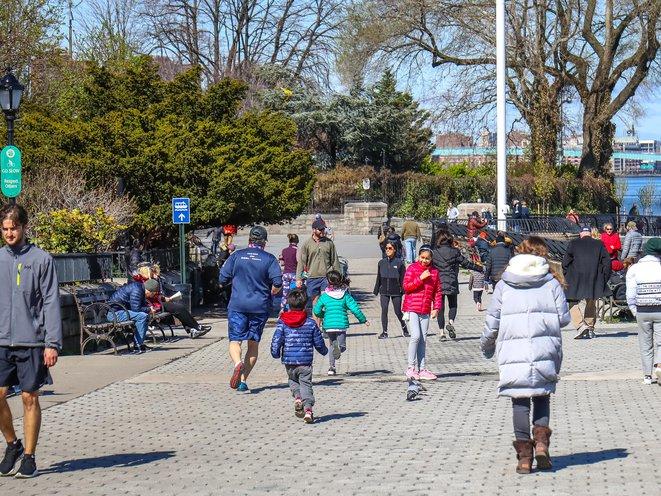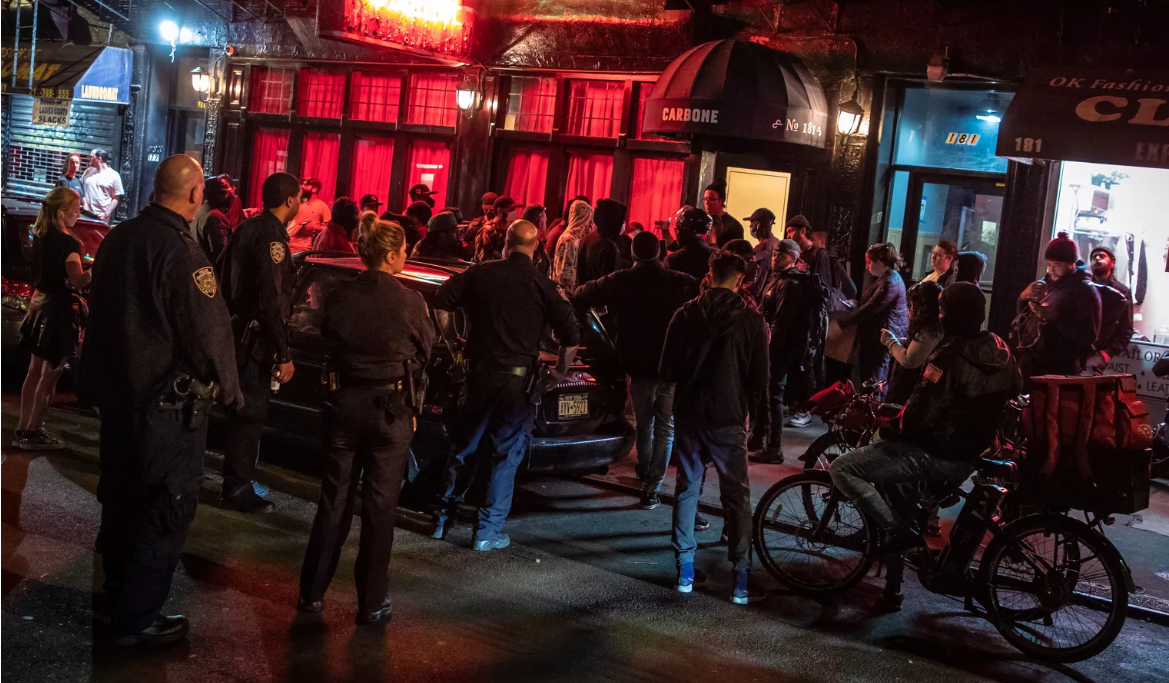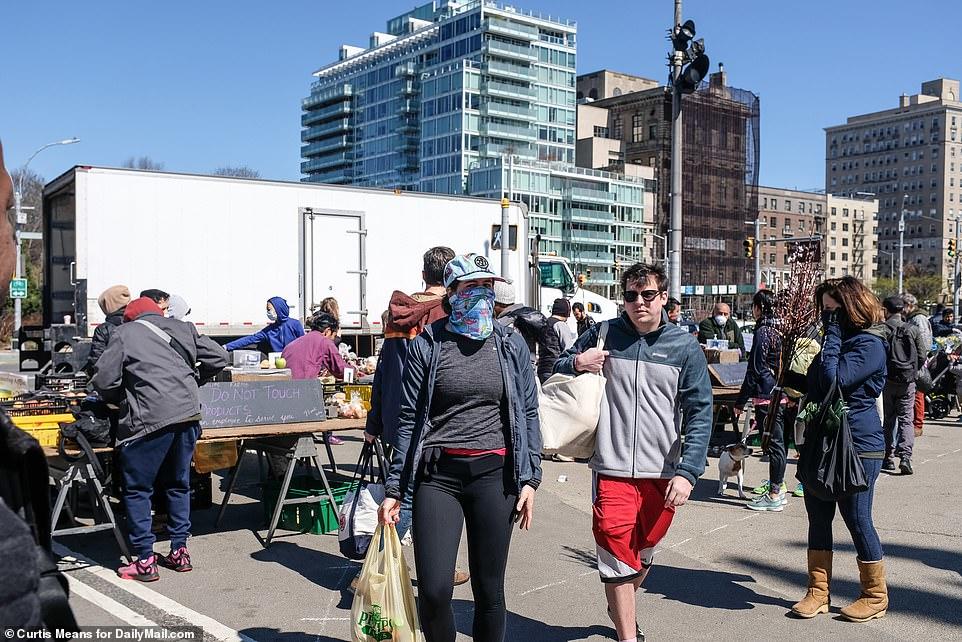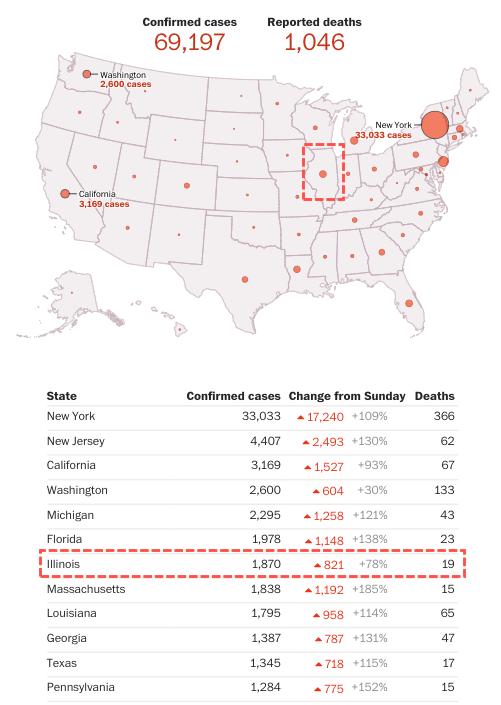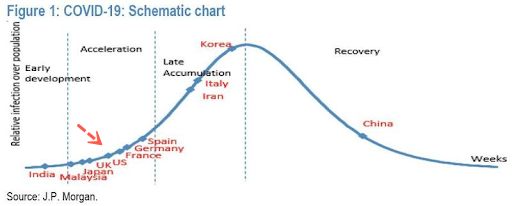From the motion for an injunction in Kashinsky v. Murphy, filed today in federal court in New Jersey, and supported by the Firearms Policy Coalition and the Second Amendment Foundation; I plan on blogging the response as well, when it comes available:
On March 21, 2020, Governor Murphy and Colonel Callahan entirely closed off any and all means for law-abiding private citizens to obtain firearms in New Jersey. At the same time these Defendants took this action, they have permitted numerous other retail businesses to continue their operations under limited conditions—meaning that this is not a situation where it is simply not possible to allow any retail businesses whatsoever to continue operation. Rather, the State has permitted the retailers of many other products—including alcohol, marijuana, and office supplies—to continue distributing goods to the public.
The Defendants’ actions have a particularly significant impact because in the State of New Jersey the only way a person can obtain a firearm is by means of a transaction consummated at the premises of a licensed gun dealer. Closing all gun stores, without exception, results in a situation where it is illegal to purchase a gun. Period.
To be sure, the COVID-19 outbreak is an existential threat that requires significant sacrifices and adjustments by all people, regardless of their views on firearms (or anything else). But no interest, no matter how compelling it may be, can justify the elimination of constitutional rights. Governor Murphy could not cite the seriousness of COVID-19 to justify bans on speech or reading, nor would the COVID-19 outbreak justify convicting people of crimes without providing them with trials, or searching houses door-to-door without warrants. The Constitution imposes a floor the government cannot go beneath. In crafting emergency orders to address threats, including very serious ones, the government must take care to ensure that it does not go too far.
Here, by completely prohibiting the acquisition of firearms, the government has gone too far—and this Court’s relief is needed to remedy an irreparable injury that exists right now…. [I]t is now impossible for a private citizen to purchase any type of conventional firearm (handgun, rifle, or shotgun) in the State of New Jersey …:
- Any person wishing to purchase a gun in New Jersey must use the services of a licensed dealer;
- The person must meet the dealer at the dealer’s licensed premises; and
- The licensed dealer must be able to complete a federal background
It has accordingly become impossible to purchase a firearm because Executive Order 107 prohibits dealers from being “open to the public” under any set of circumstances. And even if it did not, the Division of State Police has made the background check system unavailable to “licensed retail dealers,” which in and of itself makes completing a purchase impossible.
[A.] To Obtain a Firearm, a Person Must Appear in Person at a Licensed Premises, and There Must Be a Background Check
[Details omitted. -EV]
[B.] Executive Order 107 and the Shutdown of the State Police Background Check Portal
Governor Murphy issued Executive Order 107 on the evening of March 21, 2020. See Executive Order 107, available at https://ift.tt/2Wust65 (last visited Mar. 24, 2020). The order identifies various types of “retail businesses” as being “essential,” and it further provides that “[t]he brick-and-mortar premises of all non-essential retail businesses must close to the public as long as this Order remains in effect.”
The “essential” retail businesses include convenience stores, liquor stores, marijuana dispensaries, dry cleaners and office supply stores. Id. These “essential” businesses can remain open to the public, but they must “abide by social distancing practices to the extent practicable” such as making “all reasonable efforts to keep customers six feet apart and frequent use of sanitizing products on common surfaces.” Executive Order 107 did not include licensed firearms dealers in its list of “essential” businesses, and they therefore must be “close[d] to the public” for the duration of the order.
Shortly after Governor Murphy issued the order, the Division of State Police changed the portal that is used for conducting background checks so that it was impossible to submit any additional background checks. Furthermore, the Division of State Police posted a notice stating that it would process the background checks that had been submitted to it up to and including Thursday, March 19, 2020, but that it would not process background checks that had been submitted on Friday and Saturday, March 20-21, 2020, and all of these background checks remain pending at the present time….
Argument
… The Plaintiffs are likely to succeed on the merits because categorical bars on the ability to acquire firearms are per se unconstitutional. These are precisely the types of laws that the Supreme Court overturned in District of Columbia v. Heller, 554 U.S. 570 (2008) and McDonald v. City of Chicago, 561 U.S. 742 (2010).
In Heller, the Supreme Court invalidated a District of Columbia law that substantively provided that “the registration of handguns is prohibited.” Specifically, the District of Columbia Code made it illegal to, inter alia, “possess” a gun in the absence of a “registration certificate,” and it then provided that “[a] registration certificate shall not be issued for a … [p]istol not validly registered to the current registrant in the District prior to September 24, 1976.” The Court’s conclusion was that “[a]ssuming that [the petitioner] is not disqualified from the exercise of Second Amendment rights, the District must permit him to register his handgun[.]”Furthermore, the District’s law was unconstitutional without regard to the standard of scrutiny. “Under any of the standards of scrutiny that we have applied to enumerated constitutional rights,” a ban on handguns “would fail constitutional muster.”
In McDonald the Supreme Court likewise overturned a Chicago law that “prohibits registration of most handguns, thus effectively banning handgun possession by almost all private citizens who reside in the City.” …
While there is some debate about the full import of the decisions in Heller and McDonald, this much is irreducible: The local laws that the Court invalidated were not, strictly speaking, laws that completely “banned” handguns. Rather, they were laws that prohibited people from acquiring additional handguns. People remained free to keep handguns they had registered in the District of Columbia before 1976, and in the City of Chicago before 1982. The restrictions that the Court found invalid “[u]nder any of the standards of scrutiny that we have applied to enumerated constitutional rights,” Heller, 554 U.S. at 628, were laws that prohibited otherwise eligible individuals from acquiring handguns, even though they allowed people to keep handguns they already owned. It is those laws that, under Heller and McDonald, are per se unconstitutional.
The Court of Appeals for the Third Circuit has itself recognized that the Second Amendment cannot tolerate a prohibition on selling guns. In United States v. Marzzarella, 614 F.3d 85 (3d Cir. 2009), the court evaluated the import of Heller and, particularly, of three examples of regulations that the Court explained it had not intended “to cast doubt on.” Those were “longstanding prohibitions on the possession of firearms by felons and the mentally ill, or laws forbidding the carrying of firearms in sensitive places such as schools and government buildings, or laws imposing conditions and qualifications on the commercial sale of arms.” The Third Circuit concluded that the first two types of restrictions were “exceptions to the right to bear arms” and accordingly outside of its scope. But it qualified that “[c]ommercial regulations on the sale of firearms do not fall outside the scope of the Second Amendment” because if so “it would follow that there would be no constitutional defect in prohibiting the commercial sale of firearms. Such a result would be untenable under Heller.” And notably, the Court of Appeals for the Ninth Circuit agrees that “a total prohibition on the commercial sale of firearms” is “‘untenable under Heller.'” But the State of New Jersey has done more than create a “total prohibition on the commercial sale of firearms”; the State’s actions are actually more egregious because they prohibit the sale of firearms in any manner, whether “commercial” or not.
The restrictions that the Defendants have imposed here are invalid for the same reasons that the laws in Heller and McDonald were invalid—indeed, just as the Third Circuit articulated in Marzzarella. These restrictions are invalid per se because they prohibit something that may not be prohibited—the exercise of constitutional rights deemed fundamental—and it is not necessary to resort to tiers of scrutiny to evaluate them. One notable example is Board of Airport Commissioners v. Jews for Jesus, Inc., 482 U.S. 569 (1987), where the Court struck down an LAX airport policy that prohibited (literally) all “First Amendment activities” on LAX property. The unanimous Court declined to address the standard of review, explaining simply that “no conceivable governmental interest would justify such an absolute prohibition of speech.”
Another pertinent example is National Socialist Party of America v. Skokie, 432 U.S. 43 (1977), where the Supreme Court summarily overturned a lower court decision that had enjoined a neo-Nazi group from parading through a town. Few would dispute that a (substantially Jewish) community has compelling public safety reasons for trying to stop a neo-Nazi group from parading, displaying swastikas, and distributing literature—but these safety reasons were insufficient to override the enumerated right of free speech. The Court’s decision in Heller cited Skokie and explained that there, the Court had refused to “apply an ‘interest-balancing’ approach to the prohibition of a peaceful neo-Nazi march through Skokie.” Heller, 554 U.S. at 635. There is no exception in “the freedom-of-speech guarantee that the people ratified … for the expression of extremely unpopular and wrong-headed views. The Second Amendment is no different.“
There, as here, a flat prohibition on the exercise of an enumerated constitutional right is unconstitutional on its face. No amount of interest-balancing will remove a right from the Constitution. Laws that simply preclude protected activities do not require resort to any standard of review….
The Third Circuit’s decision in Marzzarella explains that a burden on free speech “is susceptible to several standards of scrutiny, depending upon the type of law challenged and the type of speech at issue”—and that there is “no reason why the Second Amendment would be any different.” Thus, “[i]f the core Second Amendment right is burdened, then strict scrutiny applies; otherwise, intermediate scrutiny applies.” The “core” Second Amendment right that the Third Circuit referenced in Association of New Jersey Rifle & Pistol Clubs is “to allow ‘law-abiding, responsible citizens to use arms in defense of hearth and home.'” The shutdown order and restrictions at issue here preclude law-abiding citizens from obtaining arms to use in defense of hearth and home, thus striking at the very core of the Second Amendment. For without the ability to obtain arms, the right to keep them is illusory and meaningless. Here, as in Heller, Board of Airport Commissioners, and Skokie, the Defendants’ actions have precluded the exercise of an enumerated constitutional right and no interest balancing test need be applied. Their actions patently offend the Plaintiffs’ Second Amendment rights. However, should this Court apply a tiered standard of scrutiny, it must be a strict one.
Under a strict scrutiny approach, a law must be “‘narrowly tailored to serve a compelling state interest.'” Moreover, the law is presumed to invalid, with “the government bear[ing] the burden of rebutting that presumption.” The burden at issue here—a categorical ban on the acquisition of arms by the law-abiding—cannot be sustained under this standard.
Concededly, preventing the spread of a pandemic illness is a compelling government interest. But nothing makes a blanket ban on gun acquisition “necessary” to achieve that interest—and moreover, the burden of a blanket closure is very plainly not narrowly tailored. If the State can establish conditions that safely permit people to purchase alcohol, marijuana, and office supplies, and to take their clothes to the dry cleaner, then it can establish conditions that safely permit people to enter gun stores and receive delivery of firearms. There is no reason for this arbitrary treatment, let alone one that could withstand the rigors of heightened constitutional scrutiny. The fact that many other states have exempted firearms retailers from their closure orders, only underscores the fact that the approach the State of New Jersey has taken is not narrowly tailored.
The decision in Bateman v. Perdue, 881 F. Supp. 2d 709 (E.D.N.C. 2012), is instructive. That case concerned North Carolina laws providing that during a state of emergency it was illegal “to transport or possess off [one’s] own premises any dangerous weapon,” and further, that government officials could prohibit or restrict “the possession, transportation, sale, purchase, storage, and use of dangerous weapons and substances.” The court concluded that even though the “state of emergency” prohibitions “may be limited in duration,” they “strip peaceable, law abiding citizens of the right to arm themselves in defense of hearth and home, striking at the very core of the Second Amendment.” Thus, the laws at issue, “much like those involved in Heller, are at the ‘far end of the spectrum of infringement on protected Second Amendment rights.'”
The court accordingly applied a strict scrutiny standard of review. And under that standard, “the emergency declaration statutes are presumed invalid, and defendants bear the burden of rebutting that presumption by showing that the laws are narrowly tailored to serve a compelling government interest.” The court found that while there was a compelling interest in public safety and crime prevention, the state-of-emergency restrictions were not narrowly tailored to serve that interest. Specifically, “[t]hey do not target dangerous individuals or dangerous conduct. Nor do they seek to impose reasonable time, place and manner restrictions by, for example, imposing a curfew to allow the exercise of Second Amendment rights during circumscribed times.” Rather, they “effectively ban[]” the public “from engaging in conduct that is at the very core of the Second Amendment at a time when the need for self-defense may be at its very greatest.” The court accordingly had no choice but to conclude that the restrictions were invalid as-applied.
As the Supreme Court itself recognized in Heller, “[w]e know of no other enumerated constitutional right whose core protection has been subjected to a freestanding ‘interest-balancing’ approach. The very enumeration of the right takes out of the hands of government—even the Third Branch of Government—the power to decide on a case-by-case basis whether the right is really worth insisting upon.” So, while the forced closure of all gun retailers in the State would fail to pass constitutional muster under a standard-of-scrutiny based review, the reality is that any standard of review would be inappropriate to use because a blanket ban on obtaining arms is flatly unconstitutional without regard to the interests cited….
An Injunction Will Not Harm Other Interested Persons
This Court’s injunction will only apply to individuals who have already obtained FPIDs and/or Permits to Purchase from local police authorities. And as previously explained, those authorities had a legal obligation to “investigate” applications and refuse licensure to unsafe or disqualified individuals. Thus, anyone who is able to purchase a firearm following this Court’s order will have gone through, and passed, a substantial vetting process that is focused on whether their possession of firearms would be contrary to the public interest. {We do not mean to suggest that a State without a licensing or permitting system for the acquisition of guns would be free to close off all legal channels for the acquisition of guns. Rather, we wish to highlight that, on the facts presented here, the people who would benefit are people who have already passed background checks and have to pass yet another background check for the transfer of a firearm.}
Allowing these people to purchase firearms notwithstanding the Defendants’ attempts to ban gun sales will not significantly undercut the State’s overarching goal in requiring background checks in the first place. Furthermore, Plaintiffs would still have to undergo another background check in order to actually take possession of a firearm. Of course, the State cannot cite the existence of civilian gun ownership as a “harm” because the decision has already been made—over 200 years ago—to protect this activity….
[M]ultiple other states impose “shelter at home”-type restrictions to address the coronavirus have been able to craft proposals that did not totally foreclose access to firearms retailers. For example, the States of Arizona, Connecticut, Illinois, Louisiana, Virginia, and West Virginia have all adopted state-of-emergency restrictions that still permit firearms retailers to conduct business under some set of circumstances. The neighboring State of Pennsylvania had prohibited gun stores from operating, but it recently amended its emergency order to allow firearms retailers to “operate physical businesses on a limited basis to complete only the portions of a sale/transfer that must be conducted in-person under the law[.]”
from Latest – Reason.com https://ift.tt/2WPJnMv
via IFTTT

